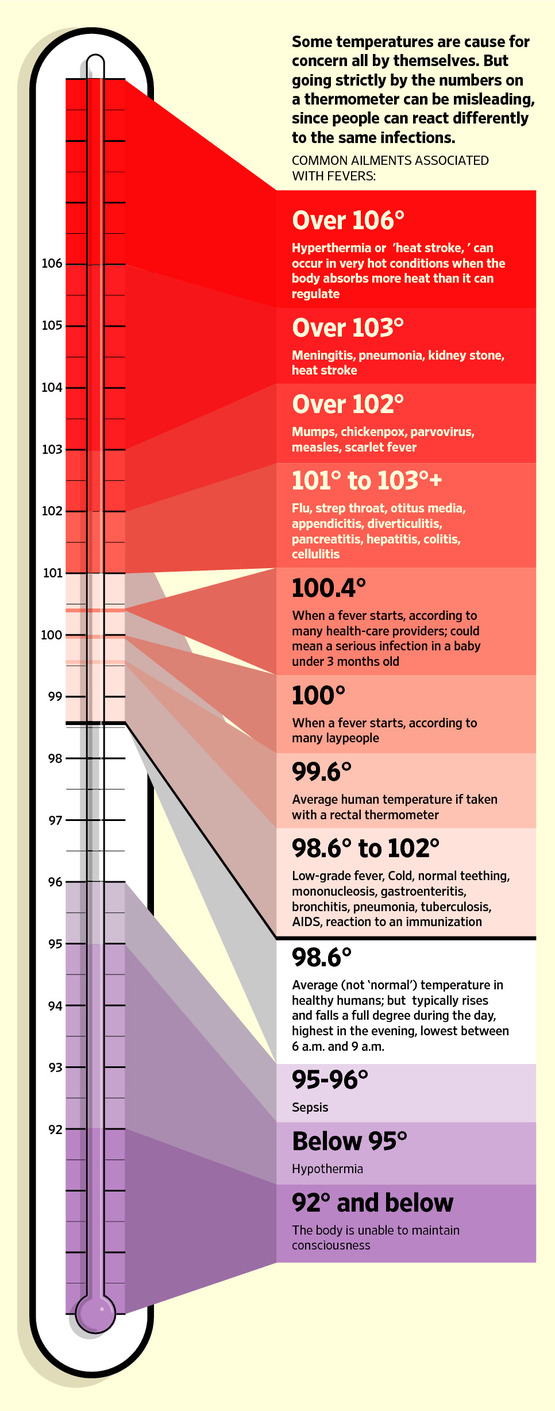Presenting Characteristics, Comorbidities, and Outcomes Among 5700 Patients Hospitalized With COVID-19 in the New York City Area, JAMA, 22 April 2020
70% of people sick enough to be admitted with Sars-CoV-2 did NOT have a fever:
At triage, 30.7% of patients were febrile.
Why no fever? Fever is important:
Fever And The Thermal Regulation Of Immunity: The Immune System Feels The Heat, Nature Reviews, Immunology, June 2015
The fever response is a hallmark of infection and inflammatory disease and has been shaped through hundreds of millions of years of natural selection. Febrile temperatures are so closely linked to the inflammatory response that heat (calor) is one of the four cardinal signs of inflammation, along with pain (dolor), redness (rubor), and swelling (tumour), as described by Celsus in ~30 BC.
The induction of fever in endothermic (warm-blooded) animals occurs at a high metabolic cost such that a 1°C rise in body temperature requires a 10–12.5% increase in metabolic rate.
There is mounting evidence that the increase of 1 to 4°C in core body temperature that occurs during fever is associated with improved survival and resolution of many infections. For example, the use of antipyretic drugs to diminish fever correlates with a 5% increase in mortality in human populations infected with influenza virus and negatively affects patient outcomes in the intensive care unit. Preclinical studies in rabbits infected with rinderpest virus also found an increase in mortality when fever was inhibited with the antipyretic drug acetylsalicylic acid [aspirin] — 70% of acetylsalicylic acid-treated animals died as a result of infection as compared with only 16% of animals with a normal febrile response.
The fact that fever has been retained throughout vertebrate evolution strongly argues that febrile temperatures confer a survival advantage. A long-standing mystery relates to the protective mechanisms by which fever wards off attacks by invading pathogens. One mechanism involves direct effects of febrile temperatures on the infectious potential of pathogens. For example, temperatures in the febrile range (40–41°C) cause a greater than 200-fold reduction in the replication rate of poliovirus in mammalian cells and increase the susceptibility of Gram-negative bacteria to serum-induced lysis.
So, why no fever? Could the virus be attacking the immune system?
We Still Don’t Know How the Coronavirus Is Killing Us, New York Magazine, 26 April 2020
That the ranges [of symptoms] are so wide themselves tells you that the disease is presenting in very different ways in different hospitals and different populations of different patients — leading, for instance, some doctors and scientists to theorize the virus might be attacking the immune system like HIV does.
Related:
Coronavirus Responsible For COVID-19 Found To Infect T-Lymphocytes, Not Unlike HIV

I saw this on Dr. Rajiv Desai’s site. Great graphic. Great site. He’s so prolific.
